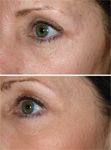- General Dermatology
- Eczema
- Chronic Hand Eczema
- Alopecia
- Aesthetics
- Vitiligo
- COVID-19
- Actinic Keratosis
- Precision Medicine and Biologics
- Rare Disease
- Wound Care
- Rosacea
- Psoriasis
- Psoriatic Arthritis
- Atopic Dermatitis
- Melasma
- NP and PA
- Skin Cancer
- Hidradenitis Suppurativa
- Drug Watch
- Pigmentary Disorders
- Acne
- Pediatric Dermatology
- Practice Management
- Prurigo Nodularis
Article
Shopping for lasers: Dermatologists should consider patient needs when investigating product options
Available fractional lasers differ considerably. Dermatologists interested in acquiring this technology must consider the needs of their patients so they can match them properly with the features of available fractional systems.

Key Points

Noting that the market landscape is likely to continue to change rapidly as manufacturers "follow the money," dermatologists interested in offering fractional rejuvenation procedures should consider product options carefully, says Mary Lupo, M.D., a private practitioner in New Orleans and clinical professor of dermatology, Tulane Medical School.
"Ask to see scientific data from published studies and request the opportunity for in-office demonstrations, so that you can gain direct feedback from trusted patients.

Fractional technology works by creating controlled, microthermal zones of heat damage in the dermis. Since untreated bridges of skin remain, the risk of scarring and pigment changes - such as can occur with full ablative treatments and even overaggressive dermabrasion - is avoided.
Furthermore, there is faster post-treatment healing, because pilosebaceous units and skin appendages in the untreated areas are left undamaged.
Specifications
However, available fractional technology units differ in their specifications. They represent a variety of wavelengths (1,540 nm, 1,550 nm, 2,940 nm and 10,600 nm) and vary as to whether they produce ablative, nonablative and/or thermal effects, as well as in the adjustability of their parameters, including energy level, depth of penetration and treatment density.
Nonablative technology
At the shortest end of the wavelength spectrum are the 1,540 nm erbium:glass Lux 1,540 (Palomar) and the 1,550 nm erbium:glass Fraxel Re:store (Reliant).
Both devices are approved for a diverse group of indications, including dermatological procedures requiring the coagulation of soft tissue, resurfacing, melasma and acne scars.
In addition, the Re:store is indicated for photocoagulation of pigmented lesions and treatment of actinic keratoses.
Treatment can be performed on and off the face, and Dr. Lupo says she has used this technology safely in Asian and lighter black patients.
However, effective treatment of the various indications requires careful adjustment of the treatment parameters.
For example, Dr. Lupo says that when using the Re:store to treat pigmentary abnormalities, she uses a lower energy level (8 mJ to 10 mJ) and higher coverage treatment levels, but the energy may be increased up to 70 mJ to treat scarring.
Erbium:YAG choices
There are two 2,940 nm erbium:YAG fractional lasers on the market - the ProFractional (Sciton) and the Lux 2,940 (Palomar).
These longer-wavelength devices provide ablative treatments for rejuvenation of collagen matrix and improvement of scars and wrinkles.
However, these more aggressive treatments involve downtime of five to seven days, whereas morbidity after treatment with the nonablative systems is generally limited to a day of postoperative swelling.





